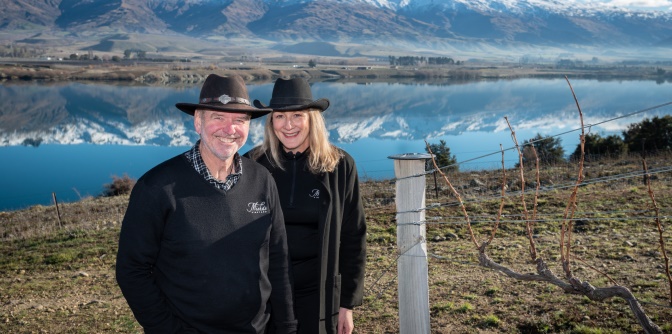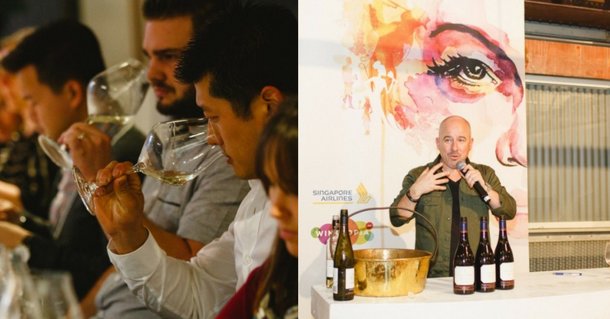Misha’s Vineyard owners Misha and Andy Wilkinson share their tips for export success.
Taking over 18 years of high-flying business experience gained from Singapore and New Zealand, and adding it to their passion for Pinot, has proved to be a recipe for success for Misha and Andy Wilkinson.
Coming from such a corporate background, the owners of Misha’s Vineyard have taken a slightly different approach to creating their award-winning venture. “Our plan to export was intrinsic to our business plan,” says Misha. And it’s paying off.
“Misha’s Vineyard came about because we’d spent almost two decades in high level corporate IT roles, mainly in Singapore, and we just really needed to get something more out of life!
“So after coming back to NZ in late 1999, we knew that meant we had to build our own company.
“We were overwhelmed with the quality of the Pinot Noir being produced, and after talking to Andy’s cousin who had a vineyard in Bannockburn, Central Otago, we realised a vineyard would be the perfect option.”
A two-year search for the perfect piece of land ensued, during which they started writing a business plan. Although most (grape) farmers don’t do that, the couple believe you need a business and marketing plan first, so you know what you’re looking for.
The ideal location turned out to be 57 hectares on Bendigo Station – a high country merino station infested with rabbits and rocks. In 2004, with a mantra of “no-compromise” they set to work clearing the land and planting the vineyard.
“We had a detailed marketing plan and knew we would be export-led – especially in Asia, so we could take advantage of our knowledge and connections. We had done extensive research on our brand in our planned export markets, and on launching in late 2009, announced four distributors – in New Zealand, Singapore, Hong Kong and Japan,” says Misha.
“Although the distributors had only tasted one pre-release vintage, they were very familiar with our brand story and our quest to produce an ultra-premium product. We based ourselves in Singapore for the first year to work closely with our Asian distributors. Then in 2010 we moved to New Zealand and started operating from here.”
Over the next few years, the couple grew their export markets to over 20, including a couple in Europe, as well as the US and Canada. However, it’s now around 14 markets, as they refine their distribution footprint to markets that are big enough, convenient to service and profitable.
“It’s a long and expensive process to find distribution,” says Misha. “We put a lot into trying to find distribution in markets that were not on our target list but where New Zealand exports were strong – like the USA, UK, Australia and Canada.
“According to New Zealand Winegrowers, 75% of New Zealand wine is exported to these three markets, and if you add a fourth market, Canada, you account for 82% of exports. Currently, we don’t export to any of those countries! We have found our niche in Asia and it’s working well.”
Misha’s top tips for exporters
- Include exporting in your business plan prior to starting your business. It’s important for many reasons. We tested brand names to ensure we had a brand that would work across various markets. Then we secured our brand name with trademarks across all markets. This part is essential to avoid any issues in potential export markets down the track – like Montana had to change to Brancott Estate once it started exporting to the USA.
- The market is always more powerful than the businesses seeking to enter that market. To do business successfully in Asia requires a business structure, partnerships, relationships and business practices aligned to the market. Spending time in a market talking to as many people as possible is the only way to really start to understand the business and social culture.

Author Catherine Beard, Executive Director, ExportNZ & ManufacturingNZ




